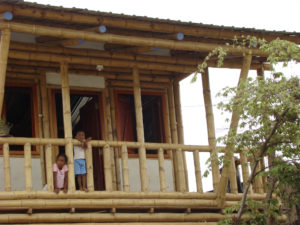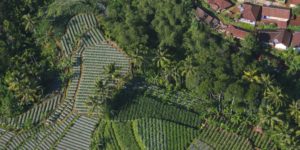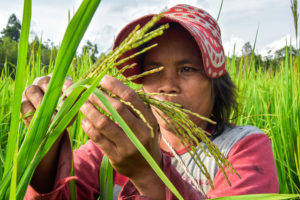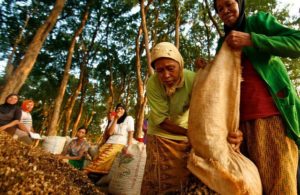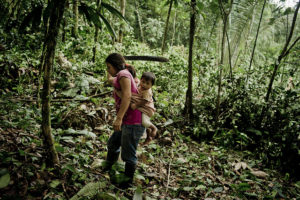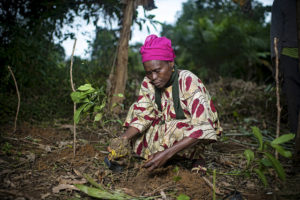Tropical rainforests currently cover 1070 million hectares of the world’s surface. More than 90% of them are located in three regions: Central Africa, in the Congo Basin; South America, mostly in the Amazon; and in Southeast Asia, in Indonesia, Malaysia and Papua New Guinea.
It is estimated that 400 million hectares of these forests are currently given over to timber production. But our research over many decades shows the rules that govern timber harvesting in tropical forest – currently based on logging intensity and cutting cycle – do not allow for the long-term recovery of the timber volume being harvested from these ecosystems.
These observations question the very foundations of the so-called “sustainable management” of these forests, and indicates that we will see further degradation of the planet’s last timber-producing tropical rainforests. It is therefore urgent that we seek out new sources of timber. Natural forests alone will not be able to meet current and future demand.
The principles of tropical silviculture – the management of forests to meet the needs of diverse groups and industries – must also be completely revised.
No time to recover
Timber harvesting in tropical forests concerns only a very small number of trees of commercial interest: one to three trees per hectare in Africa, five to seven in the Amazon, and eight in Southeast Asia. Just a few species, including ipe, cumaru, okoumé and sapelli are exploited worldwide.
Among these, only the largest trees of more more than 50 to 80 cm in diameter are felled and harvested. The forest is then left to rest, generally for 25 to 35 years, depending on a specific country’s legislation. These rest periods, known as “rotations”, should theoretically allow the forest to recover the stock of harvested timber.
But our data shows that, in reality, these resting periods are vastly underestimated.
Since the early 1980s, CIRAD and its partners have set up experimental plots to monitor tropical forest dynamics in order to assess the effects of selective logging on the reconstitution of the timber stock. This information now allows us to simulate the trajectories of exploited tropical rainforests according to the harvesting intensity, but also other variables – including rainfall and soil type.
Using this information, we calculated the reconstitution of a forests’s biomass, the commercial volume of timber and the evolution of biodiversity within the Amazon basin to highlight significant differences within the same region.
We found that, in general, the rotation times of 25-35 years in force in most tropical countries are insufficient to fully reconstitute the timber volume removed. On the other hand, biodiversity and biomass seem to recover fairly quickly within 20-25 years, after which more than 80% of biodiversity remains at the level of the pre-harvest level.
Unsustainable production
In the Brazilian Amazon, current forest protection legislation is based on a 35-year cycle, with an harvesting intensity of 15-20 m3 per hectare and an initial proportion of commercial species of 20%. At this rate, and considering a harvesting area of 35 million hectares, the level of production cannot be maintained beyond one harvesting cycle of 35 years, and will then decline each year until the resources are depleted.
Only by reducing harvesting intensity by half and a 65-year cutting cycle would ensure sustainable and constant timber production; however, in this situation, only 31% of current demand could be met.
In Southeast Asia, the cutting cycle period is 20 to 30 years, and logging intensities in primary forest, on average 80m3 per hectare, can exceed 100m3 per hectare. But data from forest dynamics monitoring indicate that only an intensity of 60m³ per hectare every 40 years would ensure sustainable and consistent production over time.
Finally, in Central Africa, the recovery of the stock of timber removed 25 years after logging is only 40%, suggesting a recovery of barely 50% over a 30-year rotation.
A new system for harvesting timber
The idea behind tropical silviculture, designed more than half a century ago, is that natural tropical forests are capable of producing timber in a sustained manner. In light of our results, this position must be completely revised.
The monitoring of tropical forests dynamics after logging shows that, in most tropical countries, they will not be able to meet the growing market demand for timber within 30 years, according to the rules established by forestry legislation.
In the vast majority of cases, true sustainability would require a considerable reduction in the harvesting intensity and a significant increase in the duration of logging cycles, which compromises the economic sustainability of selective logging in the current legislation system.
Natural tropical forests can no longer be perceived as a simple source of timber: the environmental services they produce should also be taken into account. For example, we could consider pricing timber from natural forests higher than that from plantations, with intended use linked to the higher quality of their wood. This higher price would increase the economic profitability of timber harvesting in natural forests, while plantation wood could be used for less noble purposes.
There is an urgent need to promote diversified tropical forestry now, combining timber production from natural forests, mixed plantations, agroforests (human-created forest systems with a multi-level vegetation structure similar to natural forests), and secondary forests (those regenerated on deforested areas left to be abandoned).
The rising international interest in tropical forest restoration under the Bonn Challenge – a plan to restore 350 million hectares of deforested land by 2030 – or the very recent proclamation of the UN Decade of Ecosystem Restoration (2021-2030), are both opportunities to implement this new approach in the tropics.
But no new system aimed at sustainable timber production will be successful without also introducing effective policies to combat illegal logging and deforestation, which continue to supply the timber market at lower costs and compete with any logging system aimed at long-term sustainability.
By Plinio Sist, member of the FTA Management Team













